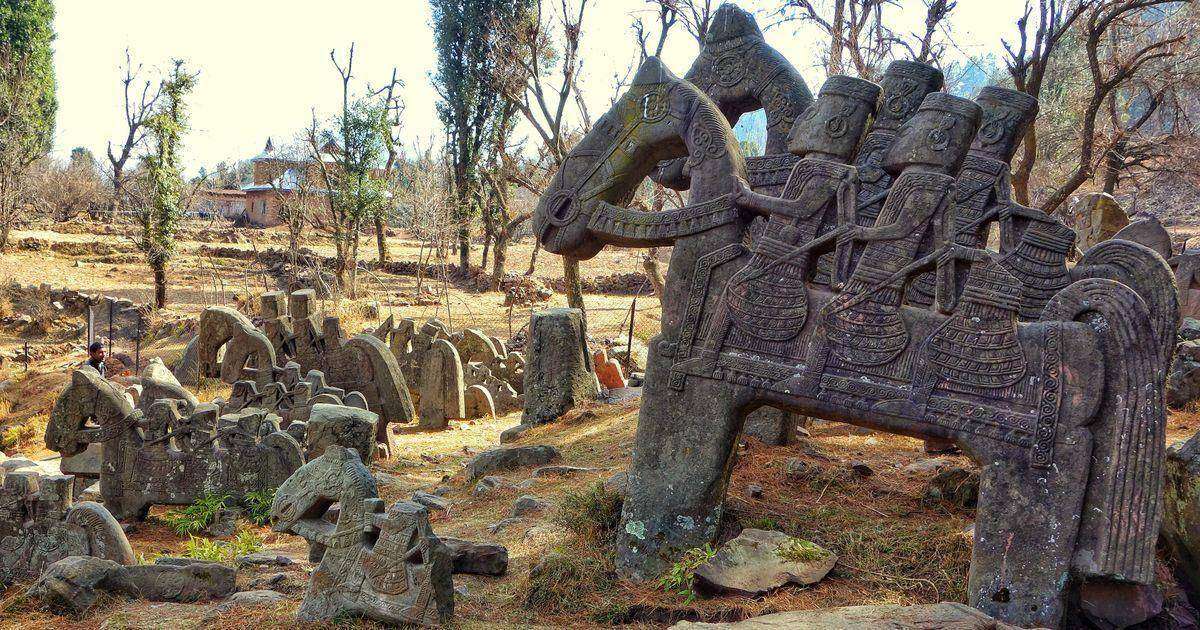The Pir Panjal mountain range got famous because of its clear views from Srinagar when the lockdown was imposed in the country due to the Covid-19 pandemic. As the pollution level dropped the mountain range was visible to the people living in Srinagar and they were left surprised.
Pir Panjal stretches from Himachal to Jammu and Kashmir and it is visible from Srinagar in Kashmir. The range is connected to the Kashmir valley through the Mughal road and used to be the historical connection of Kashmir with India. Across Pir Panjal there were ancient trade routes that were connected by passes and were known as Galis.

Apart from its picturesque beauty the Pir Panjal range is also known for its mysterious and amazing sculptures of soldiers on horseback. Many of us have heard about the terracotta Army of Xian in China but only a few people know about these mysterious horsemen. One such place in Pir Panjal is in the vicinity of the village of Gool. This village was later turned into an open museum.
Most of the statues are made of rocks depicting horses bearing two, three, or even four riders. The sculptures here are made very carefully portraying the clothes, ornaments, and arms of the riders. But most of the statues are broken and their parts can be found in nearby areas as there is no upkeep of these wonderful artifacts.
These horsemen here are mostly found at the middle part of Galis or on the main Gali. These sculptures were used to mark the rest points for the horse and horsemen. According to the locals these sculptures were placed by Pandavs from Mahabharata ea when they visited the place a thousand years back. While others believed that these sculptures have a Bactrian origin because of the attire of the horsemen and the unique geometric shapes. These ancient sculptures are only known to the trekkers and locals who make their way through Pir Panjal.

The sculptures are also found in the Ramban area of Jammu on the Sangaldan Gool road and also at Gadi Nalla, Nar, and Sildhar area of Jammu. The Sangaldan area is also known as Gulabgarh and lies in the region where Jammu gives way to the Kashmir region. Due to which the area has a mixed population of Dogri, Gojri, and Kashmiri speaking people. Only Sangaldhan is accessible by road while other areas require mountain climbing. According to the locals, many sculptures like these can be found off-road. Some of the locals say that these sculptures represent the soldiers of the army on a movement.
Over time these sculptures of horsemen are decaying in the Gool area of Ramban district. The exact period of these sculptures has not been known so far. The government has not taken any step to develop the village as a tourist spot. The state government has also failed to preserve these sculptures. According to the researchers, these sculptures belong to the 18th century while some of them relate it to the Maharashtra period. Many sculptures were buried under landslides and during the devastating floods in 2014 in J&K. The state government till now has not initiated to transfer the site to the Archeological Survey of India (ASI).
According to an ASI officer, apart from these sculptures, the area has many beautiful carved waterfalls and ponds. Over the year the ASI has excavated many hidden historical sites in the area. A unit of Rashtriya Rifles guarding the area has taken some steps to protect these sculptures but the job requires proper professional skills to preserve them. The locals have been appealing to the government to preserve this area as a heritage site and promote tourism in the area. Several sculptures have been carried away by the people of high authorities to decorate their homes but now the locals have realized the heritage value of these sculptures and did not allow any person to carry them away.
The most surprising thing is that few people even in Jammu and Kashmir know about these horsemen and their origin. No survey or study has so far been done to know the exact origin of these sculptures. The Gool in the lap of the Pir Panjal mountain range has made it to the headlines because of the worst type of terrorism as this was the infiltration route of terrorists to Kashmir and parts of Jammu region. Reports of infiltration are common in this area. Before the army control, this area almost had dominance by ultras.
